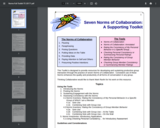
From Thinking Collaborative, a toolkit of resources for starting, developing, and supporting effective, productive team collaboration.
- Subject:
- Education
- Material Type:
- Activity/Lab
- Author:
- Thinking Collaborative
- Date Added:
- 04/24/2024

From Thinking Collaborative, a toolkit of resources for starting, developing, and supporting effective, productive team collaboration.

Authored by Jasmine Dunbar (Virginia Beach History Museums). Students will examine the daily lives of enslaved individuals and the institution of slavery in early Virginian history and understand its connections to current societal issues of predjudice, racism, and white supremacy.

In this activity, students will compare and contrast the experiences and contributions of Harriet Tubman, Elizabeth Van Lew, and Mary “Bowser” during the Civil War era. Students will conduct a gallery walk (in-person or virtually) to gather information about these three women using a graphic organizer.
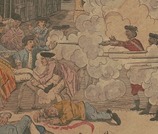
Students will examine the life of Crispus Attucks and/or James Lafayette. They will explore how both men were able to fight for their freedom as enslaved, or formerly enslaved people. Students will analyze primary and secondary sources to learn more about the life and journey of both of these men, as well as their impact on historical events.
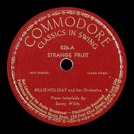
This three-day lesson is intended to guide students through the difficult history topic of lynching through the Billie Holliday song “Strange Fruit.”

When sharing secondary sources that tell a particular story of our past and present, consider how you might support students in enacting a critical lens to identify biases and missing or misrepresented perspectives. When sharing primary sources connected to experiences of violence or oppression, consider how you might honor students' developmental needs, as well as how you might frame sources in ways that affirm the dignity and humanity of people connected to those experiences. These resources can help.

The Transparency and Openness Promotion guidelines include eight modular standards, each with three levels of increasing stringency. Journals select which of the eight transparency standards they wish to implement and select a level of implementation for each. These features provide flexibility for adoption depending on disciplinary variation, but simultaneously establish community standards.

Students will examine the Three-Fifths Compromise. They will look at how the Constitutional Convention decided to handle the issue of enslavement in legislation. Students will analyze primary and secondary sources to learn more about the development and lasting impact of this compromise.
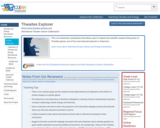
This is an interactive visualization that allows users to explore the scientific research being done on Thwaites glacier, one of the most important glaciers in Antarctica.

Students will examine the impact of the Emancipation Proclamation on the lives of formerly enslaved people in Virginia. Students will analyze primary and secondary sources to gain context and knowledge about how the Emancipation Proclamation impacted individuals lives directly. Students will develop inquiries and questions about the experiences and history that they learn about through these learning activities.
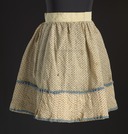
Students will explore the enduring legacy of the cultures of enslaved people in Virginia by examining primary sources, engaging the research of Black historians, and connecting to their own experiences, interests, and cultures. Students document their thinking in a graphic organizer for formative assessment.

Students will explore primary and secondary sources to investigate the origin, purposes, and vitality of Historically Black Colleges and Universities.

This learning experience explores one of the tenets and demonstrations of citizenship by exploring the legacy of voting in the United States, including who was allowed to vote, and who was not, as well as actions for students to take when they recognize unfairness.

During this learning experience, or series of learning experiences, students will explore the definition of a contribution, learn more about the contribution(s) of a diverse set of Virginians and ‘curate’ a student gallery that shows their contributions in their community now, and in the future.

The student or small groups will compare and contrast the major events of World War I and II, as a review activity. The student(s) will sort the responses to show the similarities and differences between the 2 World Wars and their outcomes. This Learning Experience can be implemented individually, in a small group, or “draw a random student in class” type of learning experience.